MARIANI’SVirtual
Gourmet
December
22, 2013
NEWSLETTER

❖❖❖
THIS WEEK
VEGAS VARIETY, Part
One
by John Mariani
NEW
YORK CORNER
POLO STEAKHOUSE
by John Mariani
NOTES FROM THE WINE
CELLAR
OF MANY BRUNELLOS, SOME
PARTICULAR MODERN STAND-OUTS
by Mort Hochstein
❖❖❖
VEGAS VARIETY
Part One
by John Mariani

Frank Sinatra's Private Plane
Those who in the
past have tried every which way to pass off Las
Vegas' dining scene as everything from lacking
in breadth and depth to merely copying what
other cities have already done simply haven't
eaten around town in the past five years.
 True, a
decade ago Las Vegas entrepreneurs tried to buy
their way into the culinary big leagues merely by
signing up chef/restaurateur celebrities like Emeril
Lagasse, Julian Serrano, Daniel Boulud, and
Jean-Georges Vongerichten, and the posh and size of
the restaurants was more in keeping with the city's
appeal to extravagance than refinement. Then there
was a period of bringing in concepts that began
elsewhere, like Rao's, Spago, and Craft.
True, a
decade ago Las Vegas entrepreneurs tried to buy
their way into the culinary big leagues merely by
signing up chef/restaurateur celebrities like Emeril
Lagasse, Julian Serrano, Daniel Boulud, and
Jean-Georges Vongerichten, and the posh and size of
the restaurants was more in keeping with the city's
appeal to extravagance than refinement. Then there
was a period of bringing in concepts that began
elsewhere, like Rao's, Spago, and Craft.
But, for at least the past three
years the restaurant scene in Vegas, both on and off
the Strip, have begun to show far more breadth and
individuality. Some new places even seem
downright neighborly.
For the second time I stayed at the
three-year-old Aria Resort and Casino (left), within
City Center, which in its architecture and sweeping
arched design is among the finer looking new
structures in the city, veering away from the
monolithic hotels of recent years. 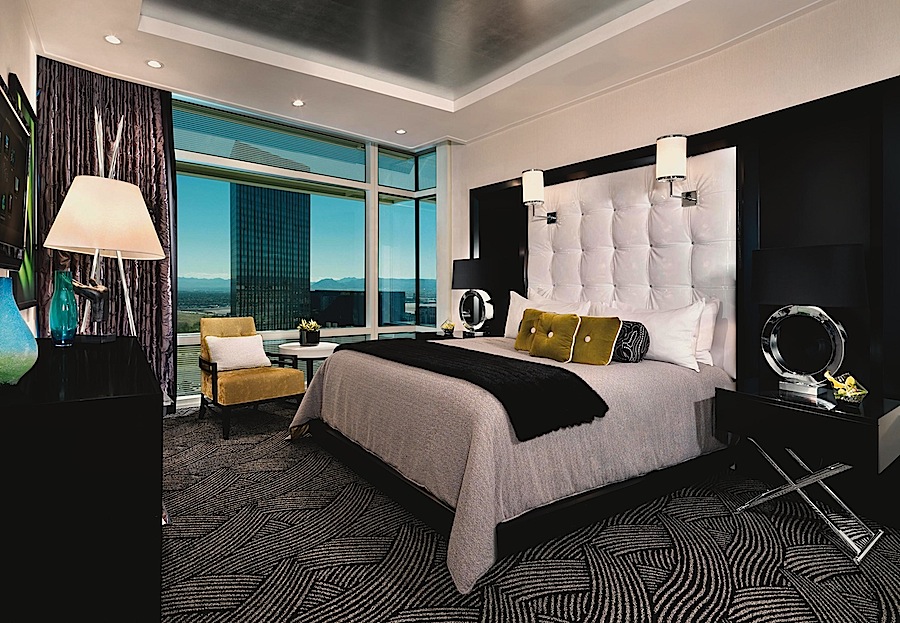
There
are
some spectacular corner Sky Suites (below) with a
near birds-eye view of the desert and a good deal of
Las Vegas. The closet space in the rooms is
commensurate with the size of all else. I also count
Aria’s multi-lingual concierges as among the finest
in a city that always takes care of its best
clients. There the usual high-end shops, the
requisite Cirque du Soleil extravaganza, Zarkana,
and the casino itself is well away from the suites
for both comfort and relief from that kind of
intensity. None of this goes cheap, of course,
but Vegas has several off-peak seasons each year and
the prices drop everywhere in town: at the moment,
there are rooms (not suites) going for just $109.
You
could
easily spend your entire time in Vegas—assuming you
are there an average of three nights—never leaving
Aria to dine, for the resort has more than a dozen
restaurants, including a buffet and various cafes;
these show what I mean by the breadth of offerings
in the city’s hotel casinos now. Julian
Serrano’s fine dining room is here, as well as
Sirio, an Italian restaurant run by the Maccioni
family; Jean-Georges Vongerichten has a steak house
here, and Michael Mina has American Fish.
TETSU
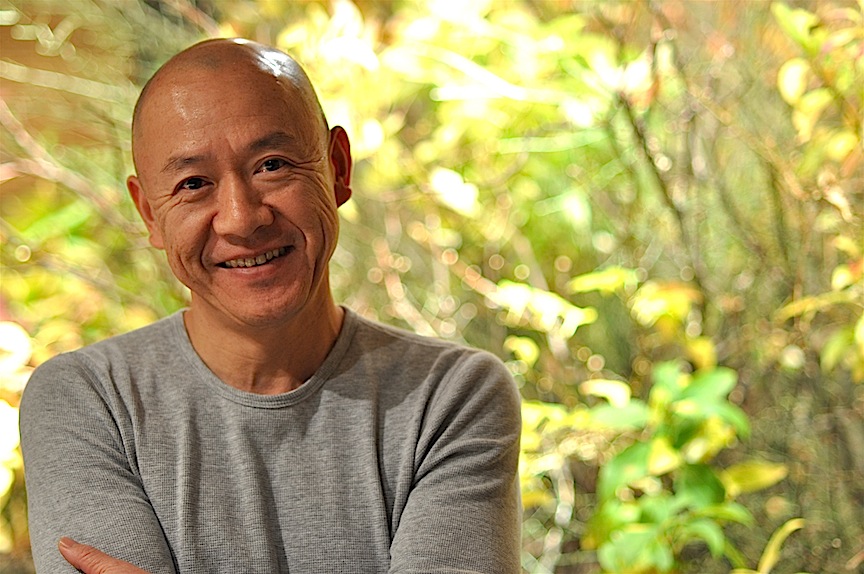 I had
dined at these other restaurants in the past, so
this time my focus was on other, more personalized
places. One of the best was Tetsu, a
teppanyaki concept by famous sushi master Masa
Takayama (left),
whose previous restaurant here was a dark, dreary,
extremely expensive Sukiyaki restaurant of
surprising dullness. Tetsu (the name means “iron,”
as in Iron Chef) is the happy opposite, a brighter,
more convivial area dominated by a counter—shaped
like a blackjack table--in front of the teppan
griddles used by the cooks to prepare your meal,
which might begin with signature dishes like toro tartare
with caviar (below);
nice, fat butterflied Scottish langoustine, and Kobe
garlic fried rice, yakisoba noodles and seafood
udon, accompanied by 100 varieties of sake available
by the bottle and 13 by the glass, plus a
600-selection wine list.
I had
dined at these other restaurants in the past, so
this time my focus was on other, more personalized
places. One of the best was Tetsu, a
teppanyaki concept by famous sushi master Masa
Takayama (left),
whose previous restaurant here was a dark, dreary,
extremely expensive Sukiyaki restaurant of
surprising dullness. Tetsu (the name means “iron,”
as in Iron Chef) is the happy opposite, a brighter,
more convivial area dominated by a counter—shaped
like a blackjack table--in front of the teppan
griddles used by the cooks to prepare your meal,
which might begin with signature dishes like toro tartare
with caviar (below);
nice, fat butterflied Scottish langoustine, and Kobe
garlic fried rice, yakisoba noodles and seafood
udon, accompanied by 100 varieties of sake available
by the bottle and 13 by the glass, plus a
600-selection wine list.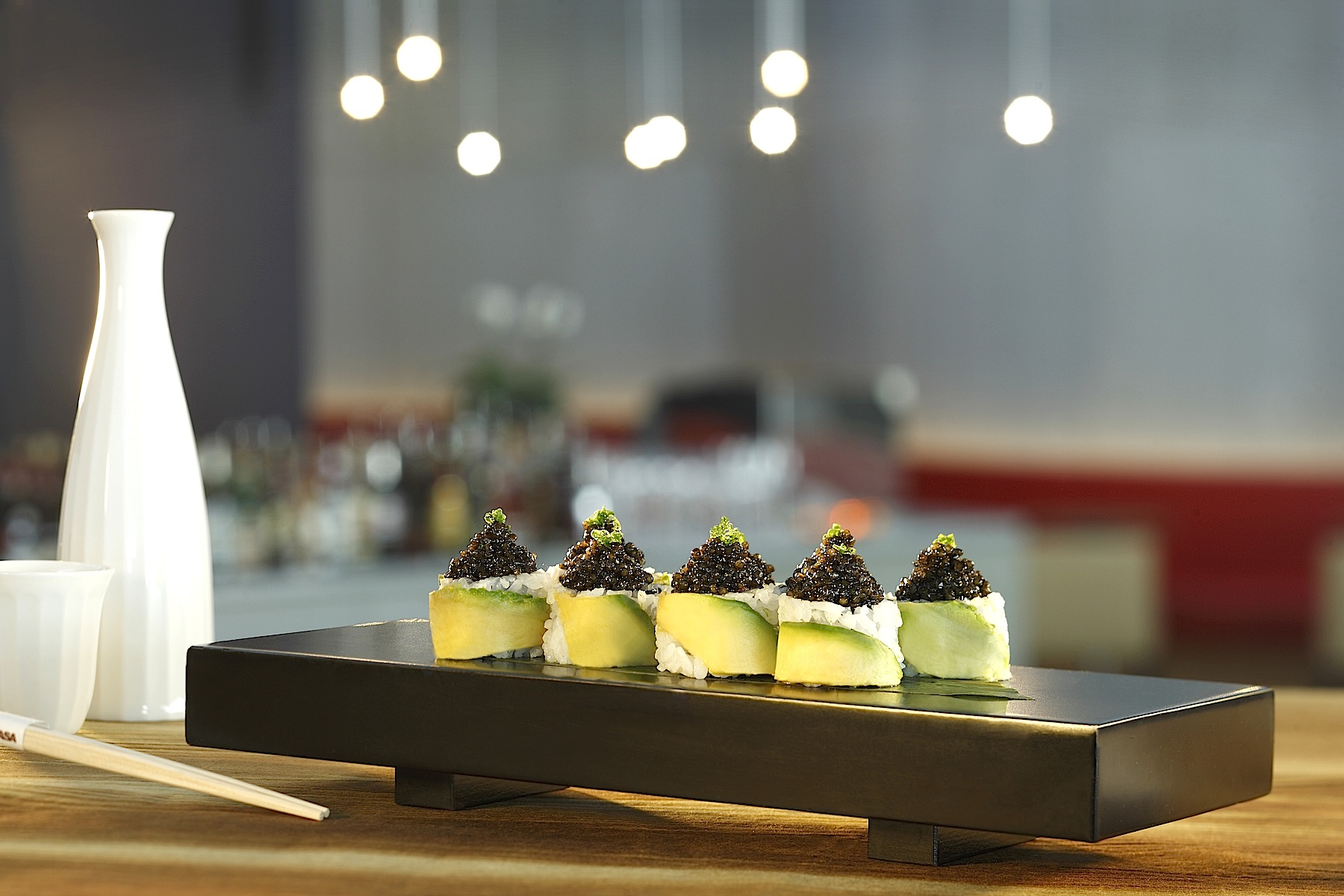
You
can
see the quality of the ingredients here as you enter
and pass a showcase of seafood, meats and
vegetables. Locavorism is simply not an option in
Las Vegas, so the restaurant brings in the finest
produce, meats and seafood from wherever they may be
on a seasonal, even weekly basis, whether it’s Maine
or Manila. There is a “fried & sizzling”
section with items like a panko seafood roll and
“Dancing shrimp,” both delicious, and of course a
very fine array of sushi and sashimi.
You
cannot
avoid ordering the teppanyaki dishes here, which
include an impressive Australian wagyu filet mignon
and luscious duck breast with assertive Thai basil.
Along with all this are irresistible side
dishes like garlic butter fried rice, habanero
shrimp nuggets and a spicy mango-zucchini salad.
I think it critical to go to a
restaurant like Tetsu with at least three friends,
tasting, switching, swooning, nodding. This is
interactive Asian cuisine at a very very high level
fit for discussion over many sips of sake.

LEMONGRASS
Lemongrass is another Asian
restaurant at Aria, this with a particularly Thai
slant, and I found the management here, from
hostesses to servers, among the most cordial I’ve
come across in town. Lemongrass also functions
very well as one of the city’s best places to have a
really fine lunch—not so easy as you think in a town
that only really comes alive after 5 p.m. Most
of the better restaurants are not open midday and
some only five days a week.
The room is high, wide and very
handsome, with plenty of fine wood and enchanting
hanging lamps.
Lemongrass is made for an ideal
and very relaxing Sunday lunch, and I very
contentedly sat alone at a big table, ordering a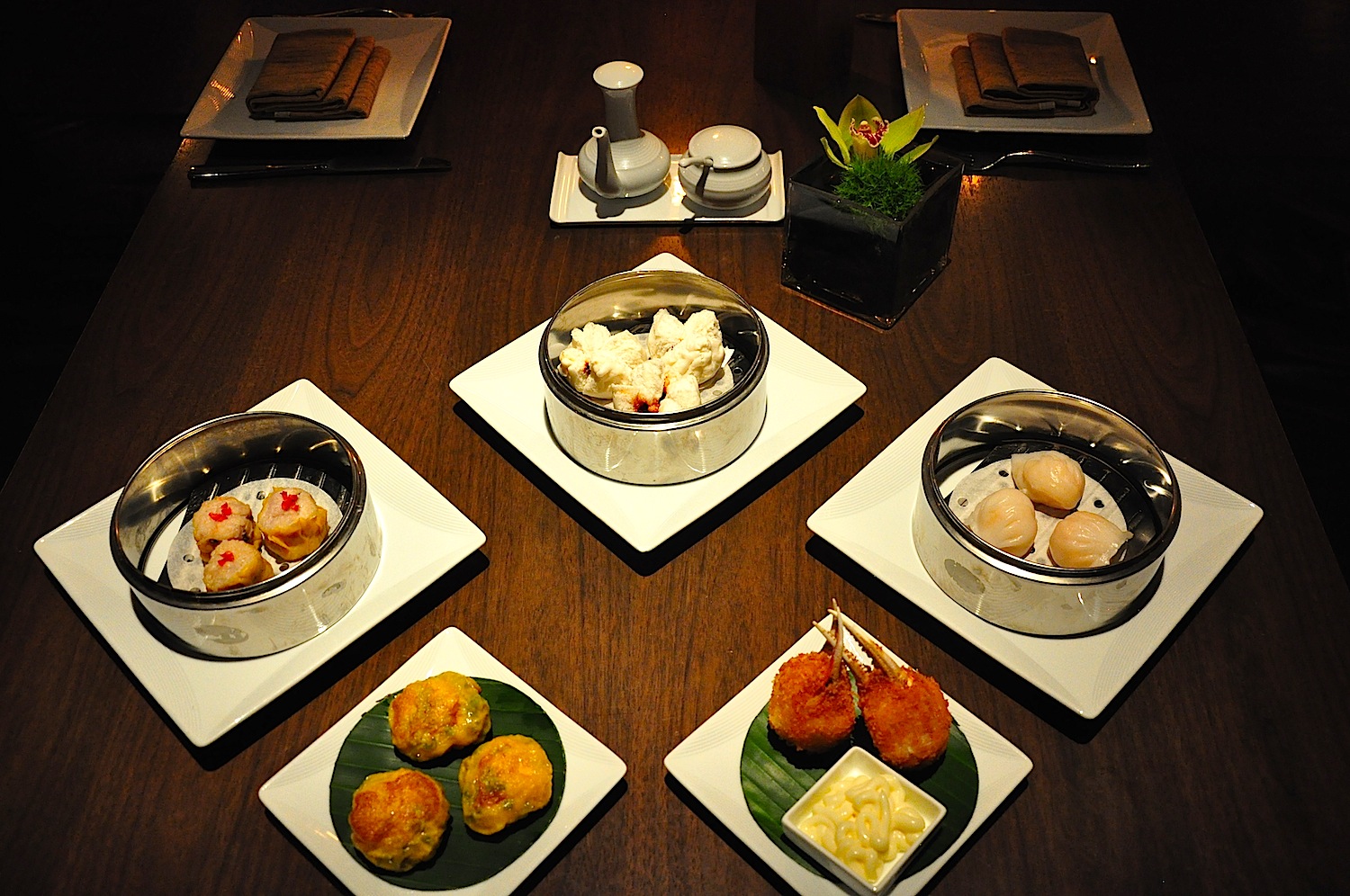 wide array
of dishes, almost all extremely savory, not least
the delicately crafted dim sum (right).
wide array
of dishes, almost all extremely savory, not least
the delicately crafted dim sum (right).
I gorged on siu mai,
steamed BBQ pork buns, minced chicken basil bun, a
spinach shrimp dumpling, minced pork curry, lobster
infused with ginger and scallion quickly cooked in a
wok to perfect succulence, and much more.
Rather than take a walk in the 108-degree heat
after lunch, I cranked up the a/c in my suite and
drifted off into a long nap before cocktails that
evening.
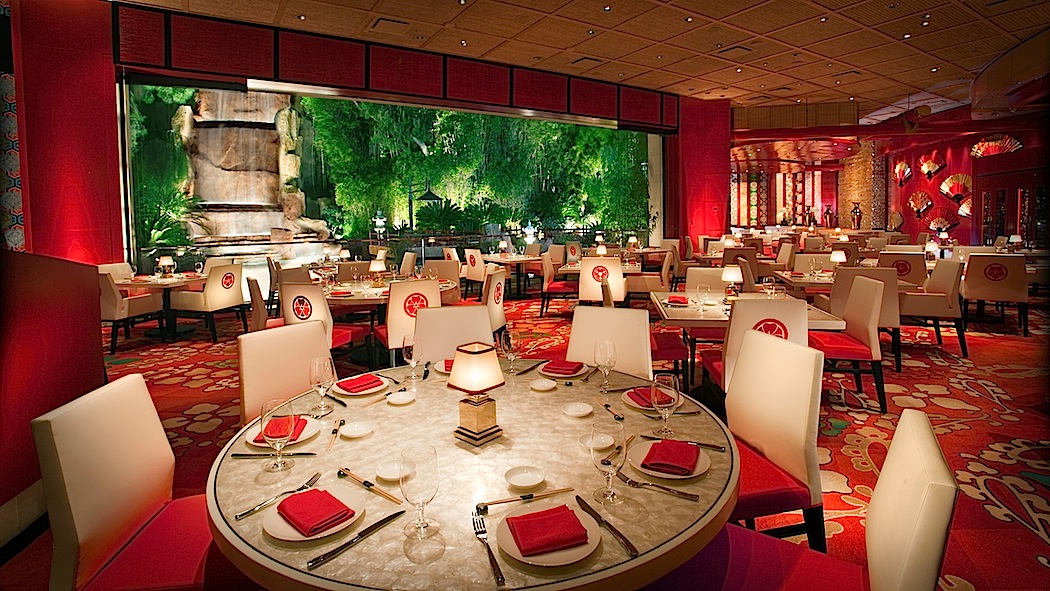 MIZUMI
MIZUMI
Wynn
Las Vegas
photo by Brian Brown
A
third Asian restaurant of note--not at Aria but at
Wynn Las Vegas--was the most spectacular, a riot of
red and gold colors, and a dazzling backdrop of
falling, lighted waters. This is Mizumi,
where there is also a teppanyaki room as well as a
sushi bar, but I just put myself in the hands of
Chef Devin Hashimoto, who was out as much to please
me as to impress me, which are sometimes mutually
exclusive. I told him how many dishes I’d like
to try and how long I wished to be at the table, and
it was all wonderfully orchestrated, beginning with
live ama ebi
sweet shrimp with a hot peppery yuzu kosho
vinaigrette, foie gras torchon powder,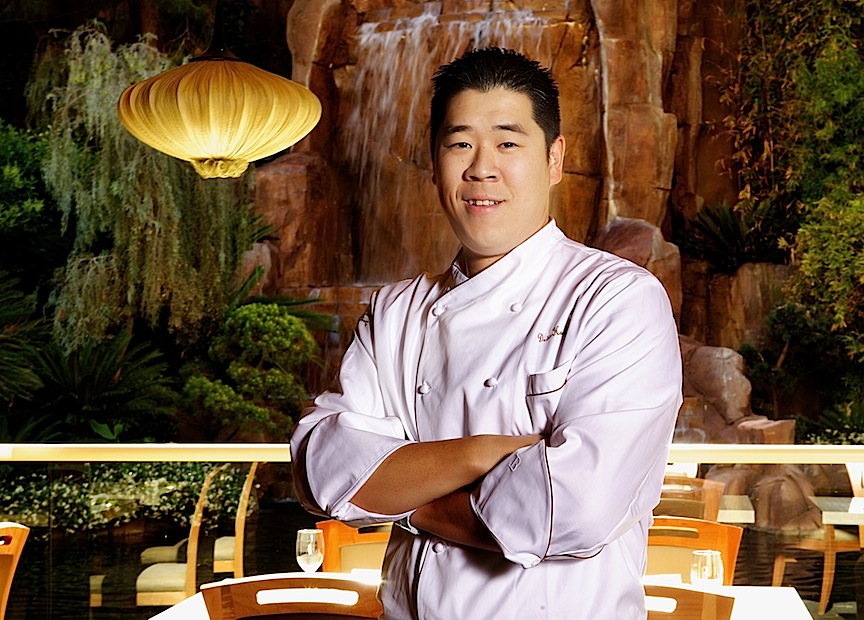 and osietra
caviar—quite a beginning.
and osietra
caviar—quite a beginning.
Next came a selection of
pristine sashimi and sushi, followed by a trip of
appetizers: octopus carpaccio with ika shoyu
squid and red wine vinaigrette peppercorns, shiso and
garlic chip, a tantalizing contrasts of textures; a
duck confit and taro taco with spicy kim-chee
infused Korean sauce and pickled Napa cabbage; and a
lobster beignet with tonkatsu breaded pork chop,
bonito, aonori
seaweed and yuzu aioli, a dish that is as fine
example of global fusion as I’ve had.
There was spaghetti next,
made from mentaiko
(marinated roe), with a raw quail egg and ikura
salmon roe to mix in. A grilled nodoguro
(sea perch) was to follow with cherry blossom and
pickled turnips, then a wagyu hot stone with
vegetables and edamame hummus. Nodoguro miso soup
soothed the palate at this point before coconut and
mango with angel’s food cake, coconut mousse, and a
mango-passion sorbet and a “Mizumi Chocolate Mask”
with hazelnut dacquoise, chocolate mousse, praline
puffed rice and vanilla ice cream.
Hashimoto is
widely regarded in Las Vegas as a chef’s chef, and I
was in no rush to disagree. His cuisine is
careful, not flighty, and the ingredients, however
disparate in their regional origins, show that
dependence on overnight airfreight can distinguish a
kitchen’s choices as well or better than adherence
to using only local ingredients.
❖❖❖
NEW YORK CORNER
by John Mariani
photos
by Sandra Moreno
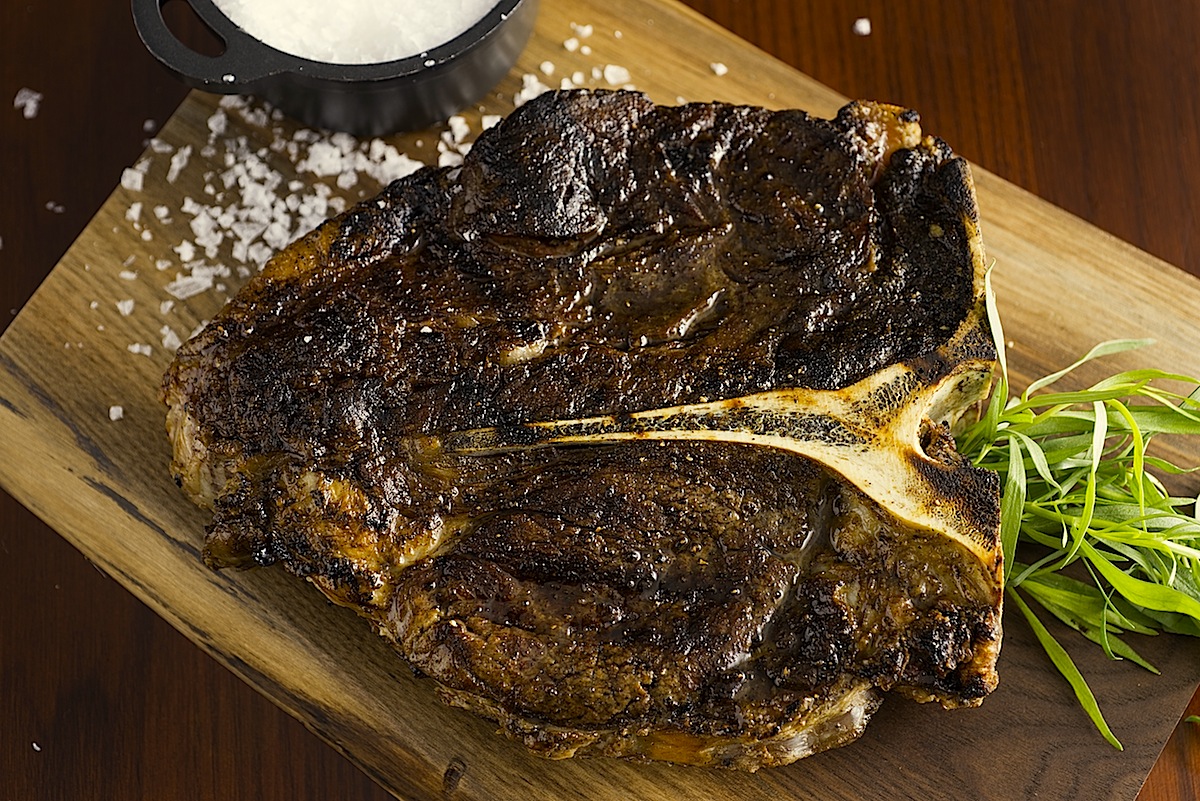 Polo steakhouse
Polo steakhouse
45 Seventh Street, Garden City, NY
516-877-9385
gardencityhotel.com/polo-steakhouse
When
you open a steakhouse just nine miles from Peter Luger
in Great Neck, Long Island, and eight miles from
Bryant & Cooper in Roslyn, you’d better deliver
beef every bit as good as those stellar competitors
do, and offer something more in terms of atmosphere
and service.
The
brand new Polo Steakhouse in Garden City delivers on
all counts: superb, mineral-rich USDA Prime steaks, a
luxurious dining room and lounge, and first-rate
service from a staff that is far more interested in
your menu choices than you’ll find at the ever-brusque
Peter Luger. Polo is located within the Garden City
Hotel, which doesn't look anything like it did when it
opened in 1874. But you may get a faint sense of
Gilded Age bravura in the steakhouse, decked out as it
is in tufted red leather chairs and brown sofas, acres
of polished mahogany, and silver and gold artwork.
Even on a fairly slow night, the noise level can
be higher than expected; on a full night, I fear it
will need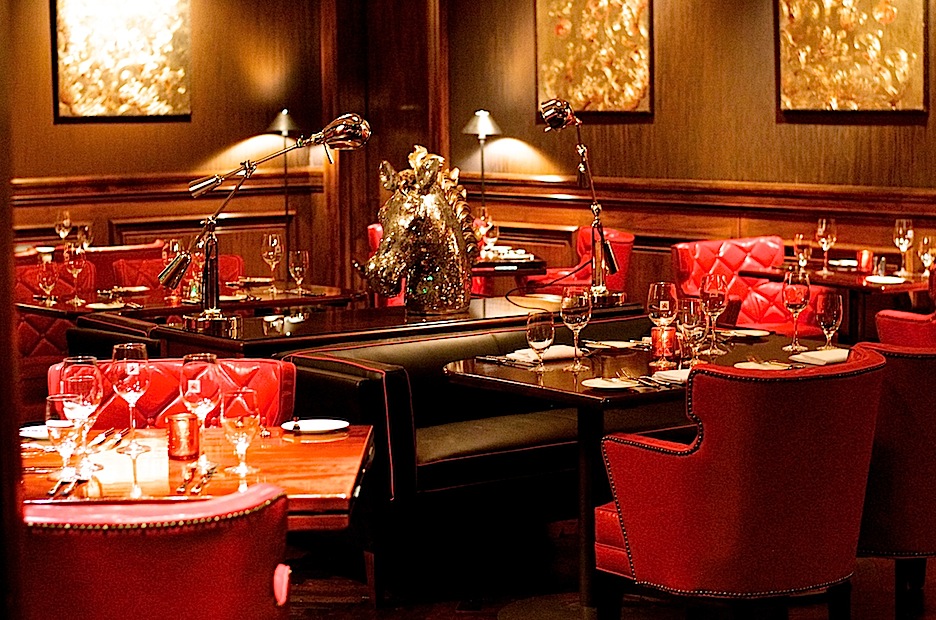 some
buffering.
some
buffering.
The tables are broad
and convivial enough for any size party, and beverage
director Frank Caiafa is serious about crafted
cocktails and building the wine list, which has a ways
to go to match a cellar like Bryan & Cooper’s.
Polo’s
chef is Michael Mandato (below), a Long Island native with 30
years kitchen experience, including most recently as
executive chef of the Taj Boston hotel. He has
crafted a menu that intelligently stays within the
American steakhouse genre while adding items you won’t
find so easily elsewhere. And they don’t skimp
on portions here.
There
are the requisite array of oysters and shellfish,
available in a seafood tower for $50 or $95. Our party
enjoyed a delicious amuse bouche
of onion soup gratinee. I’ve grown re-acquainted
with the charms of iceberg lettuce—actually, one
charm: its crunch—and it went great with crumbled blue
cheese, grape tomatoes, bacon, toasted corn and shaved
red onion (below).
A lobster salad, abundant with big chunks of the
crustacean, was well melded with avocado, haricot vert
beans, tomatoes and dressing, and there was nothing to
improve upon with the hearty, creamy lobster bisque.
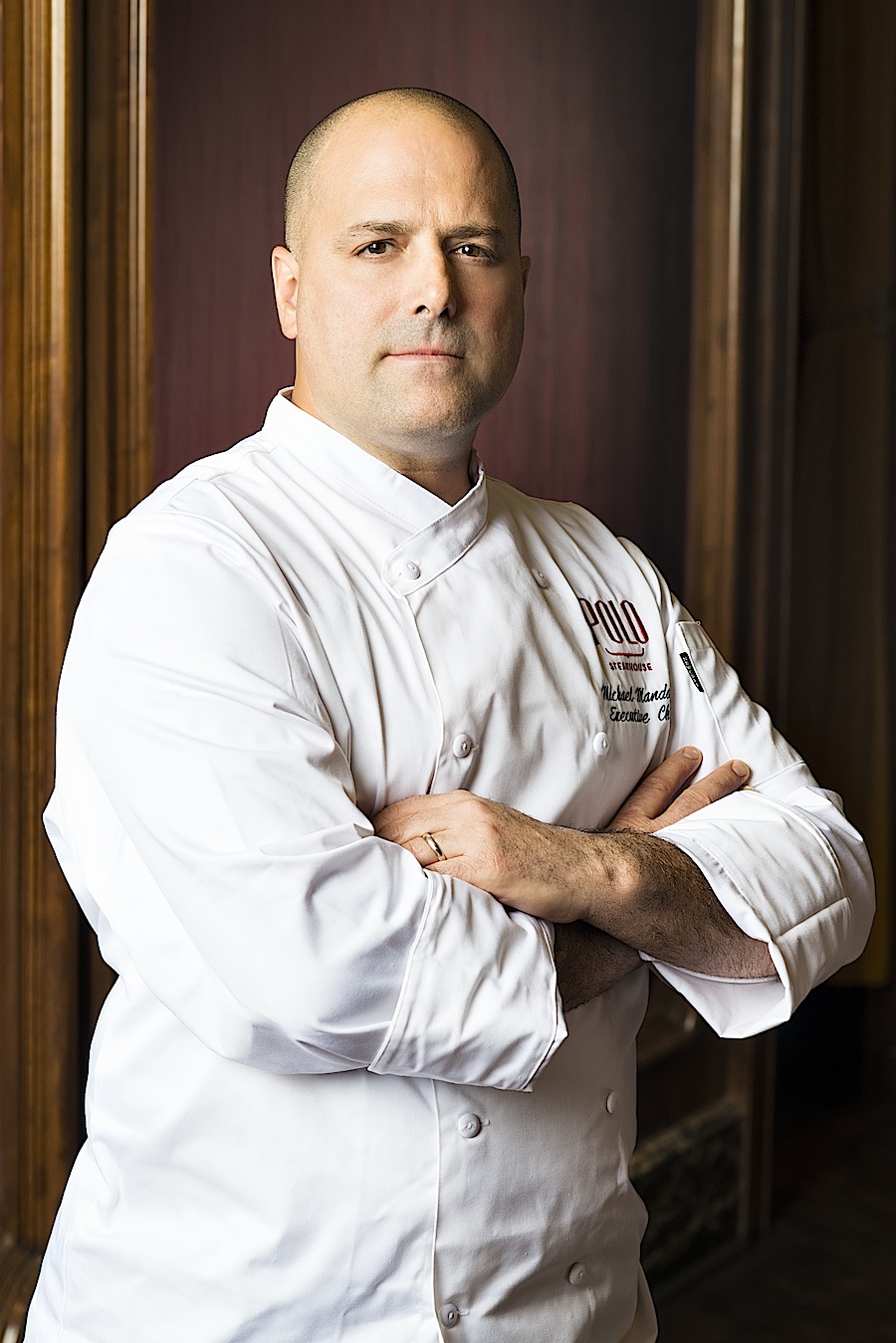 Crabcakes may
be ubiquitous in steakhouses, but not all are so
lightly compacted with so much sweet lump crab as
Polo’s, accompanied by toasted corn, celeriac and a
bite of chipotle aïoli. Boursin baked clams
casino lost a bit of flavor from the richness of the
Boursin. An expertly tableside-mixed beef
tartare had just the right amount of seasoning. Four
of us could hardly polish it off.
Crabcakes may
be ubiquitous in steakhouses, but not all are so
lightly compacted with so much sweet lump crab as
Polo’s, accompanied by toasted corn, celeriac and a
bite of chipotle aïoli. Boursin baked clams
casino lost a bit of flavor from the richness of the
Boursin. An expertly tableside-mixed beef
tartare had just the right amount of seasoning. Four
of us could hardly polish it off.
And
so we turned to the meat. (I’ll happily go back
another time and go fishing, but we were four guys in
a highly carnivorous mood that night.) There is
no better standard for a steakhouse than a strip
steak; here, curiously appended on the menu with the
designation “Kansas City,” which is the same as a “New
York” cut, so why the Midwestern reference?
Anyway, this was one of the best steaks I’ve had
all year, its perfect texture, both chewy and tender,
and its minerality proved its 28 days of dry aging was
no lie. So, too, a bone-in ribeye was well
marbled throughout the muscle, and, owing to a bone
attached to the filet mignon, that cut stayed juicier
and got a bit more flavor than it otherwise might.
Four Colorado lamb chops secured that state’s
reputation for the best anywhere. With these meats
came sauces of 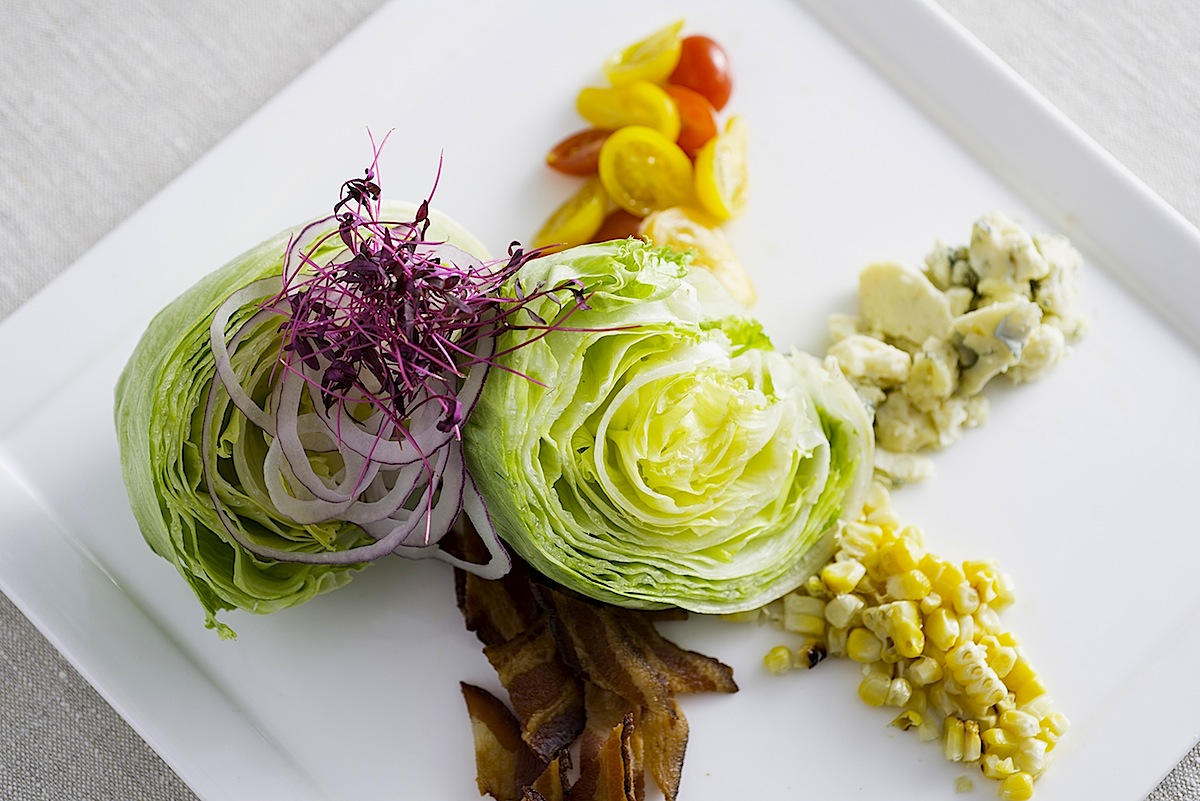 green
peppercorn, Bearnaise, and the house brand.
green
peppercorn, Bearnaise, and the house brand.
Creamed
spinach
was very good and truffle salted steak fries had
flavor but could have been crispier. Grilled
asparagus came with a citrus salsa, while four-cheese
macaroni and cheese was wholly delectable.
Dessert
is well worth putting some room aside for,
particularly the lime meringue pie, which will feed
two easily.
You
might then retire to the lounge for a nightcap,
especially if you have a room at the hotel, and enjoy
the live music.
One
caveat: the main course meat prices, ranging from $57
for the strip steak and $65 for the ribeye and filet
mignon, are as high as you’ll find anywhere in the
U.S. Consider that Luger charges $46.95 and $47,
respectively, while Bryant & Cooper charge $47 and
$50. That’s a discrepancy you’ll have to decide
is in the rest of the details at Polo.
Put
one way, Luger and Bryant & Cooper now have real
competition in that neck of Long Island with the
opening of Polo; put another, Polo is setting a higher
bar for those other two to meet.
Polo
Steakhouse is open daily; Appetizers run $12-$24,
main courses $32-$65.
❖❖❖
NOTES FROM THE WINE CELLAR
OF
MANY BRUNELLOS, SOME
PARTICULAR MODERN STAND-OUTS
by Mort Hochstein
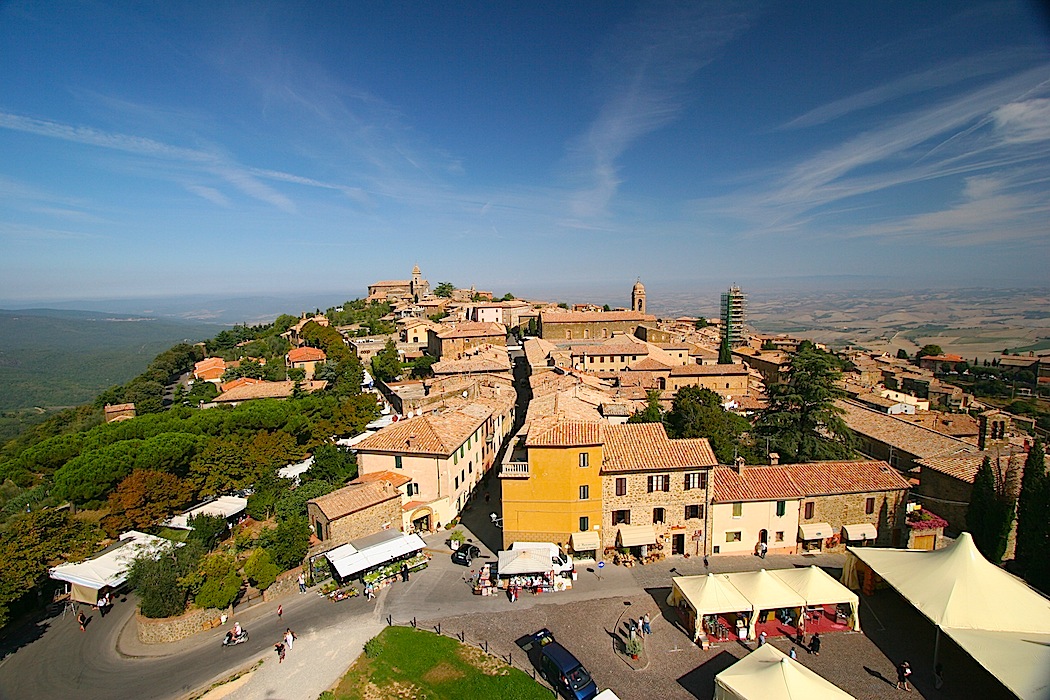
Montalcino, Tuscany
Barolo and Barbaresco from the
Piedmont and Brunello di Montalcino from Tuscany are
generally regarded as the best red wines of Italy.
The two Nebbiolos from the Piedmont have long been
exalted over all others, while Brunello from Tuscany
is a relative newcomer, having attained recognition
only in the last half century. Montalcino, in the southern toe
of Tuscany, is one of those mountaintop towns
seemingly cobble-stoned together to guard the valley
below. Although it is less than 25 miles south
of Siena, its climate is dryer and hotter, more
Mediterranean than the cooler atmosphere of Chianti
country.
Like their colleagues to the north, where Chianti
reigns, producers in the hills of Montalcino
cultivate Sangiovese. The local clone known as
Sangiovese Grosso (below)
produces a more robust wine and Brunello is never
blended with other grapes. Brunello di Montalcino is
prized for its concentrated flavor and
tongue-jarring tannins, which evolve slowly with
great potential for aging.
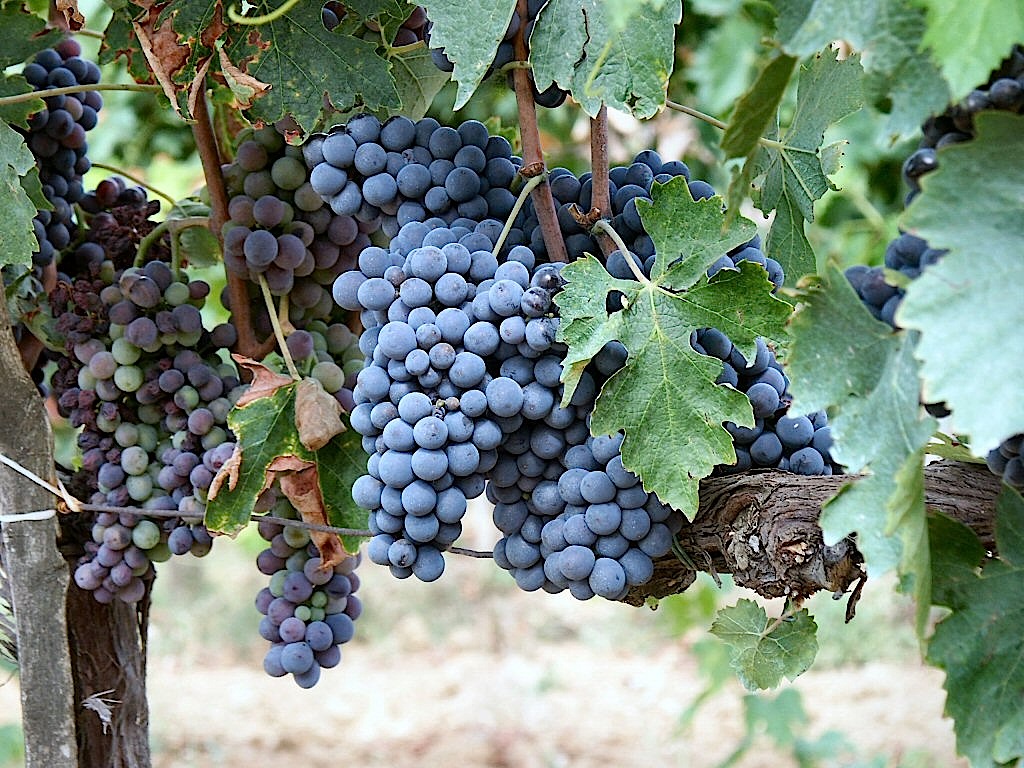 Until
recently, Italian wine laws required four years of
maturing in wood for Brunello, but that has been
relaxed to just two years followed by bottle aging,
and, purists argue, it is still an infant when it is
released. For those who don’t care to wait,
there is Rosso di Montalcino, a lighter and far less
costly, but still delectable, wine. The rosso
drinks well young, but improves immensely with a
couple of years in
bottle. Clemente Santa
is believed to have identified the Brunello clone in
the 1840s, but it wasn’t until 1888 that a grandson
founded what was to become the region’s
pioneering winery, Biondi-Santi. More than half a
century passed as Brunello began to develop a small
but devoted following. In the 1950s Fattoria di
Barbi, Constanta and a small group of producers
began making what was characterized as wine for
heroes, needing many years before becoming
approachable.
Until
recently, Italian wine laws required four years of
maturing in wood for Brunello, but that has been
relaxed to just two years followed by bottle aging,
and, purists argue, it is still an infant when it is
released. For those who don’t care to wait,
there is Rosso di Montalcino, a lighter and far less
costly, but still delectable, wine. The rosso
drinks well young, but improves immensely with a
couple of years in
bottle. Clemente Santa
is believed to have identified the Brunello clone in
the 1840s, but it wasn’t until 1888 that a grandson
founded what was to become the region’s
pioneering winery, Biondi-Santi. More than half a
century passed as Brunello began to develop a small
but devoted following. In the 1950s Fattoria di
Barbi, Constanta and a small group of producers
began making what was characterized as wine for
heroes, needing many years before becoming
approachable.
Montalcino
remained one of the poorest communities in Tuscany
until the 1970s, when major firms such as Cinzano of
Piedmont and the Mariani family of the American
importing giant Banfi Vintners began acquiring
vineyard property in those rugged hills. Banfi
put together what would become the
region's largest contiguous estate, planting a
constellation of single vineyards and building a state
of the art winery. After a false start with sweet white
Moscadello, John and Harry Mariani replanted their
vineyards for Brunello and put their promotional and
distribution muscle into expanding the market.
Italian giants such as Frescobaldi, Antinori and
Gaja and many smaller producers followed, 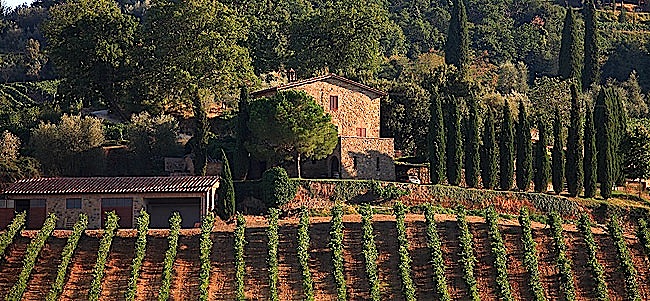 and
Montalcino, no longer a backwater, became one of the
must-visit sites on the Italian wine trail.
and
Montalcino, no longer a backwater, became one of the
must-visit sites on the Italian wine trail.
Two
wineries struck our interest at recent tastings in New
York. Fattoria
La Gerla (right), which has two vineyards
spread over 28 acres on hills around the city, was
built and is still run by its founder, former
advertising executive Sergio Rossi (below). In 1976,
Rossi was able to acquire land and an ancient
farmhouse from the Biondi Santi family and
established his winery two years later. Rossi produces
a 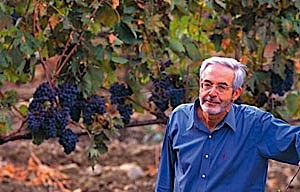 Riserva and a standard
Brunello, as well as a lighter Rosso and Birba, a less
powerful version of Brunello. As with many of the
better producers, his top-of-the line Brunellos are
aged long beyond the mandated two year minimum.
Riserva and a standard
Brunello, as well as a lighter Rosso and Birba, a less
powerful version of Brunello. As with many of the
better producers, his top-of-the line Brunellos are
aged long beyond the mandated two year minimum.
The rosso, an intense, ruby
colored, velvety wine, matures for two years, one of
them in Slovenian oak, and rests for eight months in
bottle before being released at an average retail
price of $21. The Birba, billed as a super-Tuscan even
though it is 100% Sangiovese Grosso and created to be
positioned between the Rosso and the Brunellos. It
ages 14 months in French barriques, unlike the
Brunellos that require two years in 5,000 or 10,000
liter Slovenian barrels, plus eight months in bottle.This departure from tradition required a
different appellation so the Birba is classified as an
IGT Toscana or Sangiovese di Montalcino Super Tuscan,,
about $32.
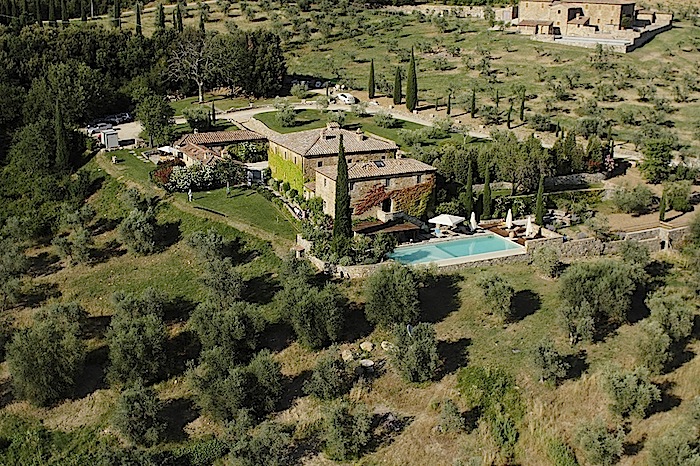 cask and a
year in bottle before being released, usually one year
after the standard Brunello. La Gerla Riserva
’07 retails for about $80 and Rossi gives it a 20-year
frame for good drinking.
cask and a
year in bottle before being released, usually one year
after the standard Brunello. La Gerla Riserva
’07 retails for about $80 and Rossi gives it a 20-year
frame for good drinking.La Gerla and the other wine on our list that day, La Fiorita, are moderately priced among a field of high fliers in Montalcino and, enthusiasts argue, are good values when compared with similar wines from Bordeaux and Burgundy. La Fiorita was founded in 1992, making it practically an upstart in that area, but the wine has quickly earned a reputation for quality. The two producers share the winemaking expertise of Vittorio Fiore, one of the most highly respected of Tuscan oenologists.
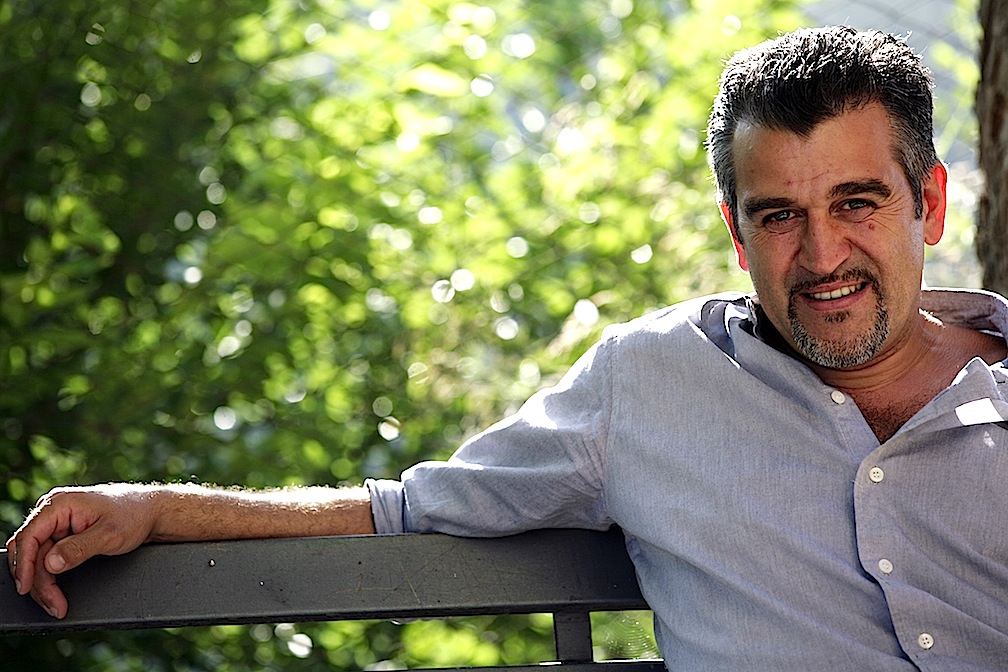
La Fiorita (right)
Their vineyard sites are the main difference between La Gerla and La Fiorita.
La Gerla grapes grow on the northern, colder slopes of Montalcino and reflect the site in their freshness, and fruity characteristics. More recently, La Gerla added vineyards in the warmer area of Castelnuova Abate and developed wines with more ripe notes and a freshness that makes for pleasant and seductive quaffing. The change, observers feel, has added even more appeal to the La Gerla wines. Both producers have put to rest the old feeling that Brunello was a wine fit only for warriors and the lengthy aging period of the past is strictly history at these wineries.
❖❖❖
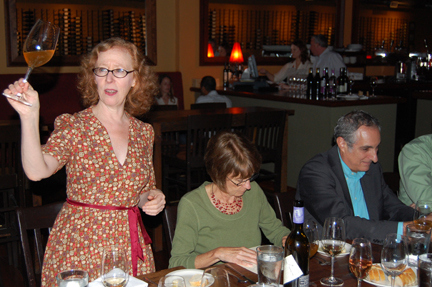 ACTUALLY, THAT'S NOT QUITE
WHAT WE BLOODY IDIOTS LOOK FOR IN CHAMPAGNE
ACTUALLY, THAT'S NOT QUITE
WHAT WE BLOODY IDIOTS LOOK FOR IN CHAMPAGNE
"Meanwhile, if you want a truly gorgeous, watermelon-like pure as driven snow, estate bottled rosé for the winter you're a bloody idiot if you don't go to Chambers Street to purchase the Esquisse from Christian Ducroux."--Alice Feiring (left), The Feiring Line 12/2013
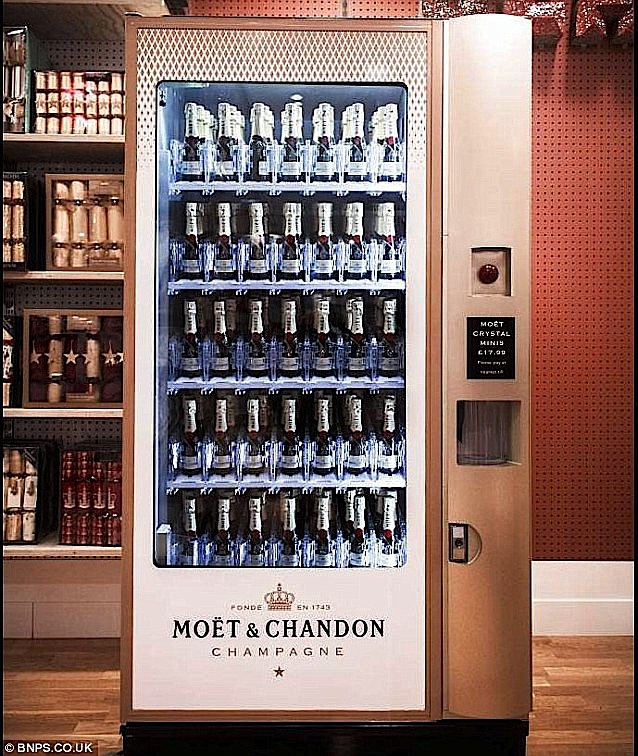
ABOUT GETTING THE KIDS SLOSHED?
in the Christmas section of London
department store Selfridges. The 200-milliliter
bottle goes for about $29,
considered by Luxury Daily as a "feasible price for
budding luxury buyers."
❖❖❖
QUICK BYTES
In March 2014, for the first time
ever, Danny Meyer’s Union
Square Hospitality Group will partner with
the Institute of Culinary Education to offer an
immersive, ten-week Wine Course covering the major
wine regions of the world, with insights from the
perspective of some of New York City’s most beloved
restaurants. USHG Wine Director and Master Sommelier,
John Ragan, will lead the course along with wine
directors and sommeliers from USHG restaurants
including Union Square Cafe, The Modern, Maialino, and
more. This course provides an opportunity for serious
wine lovers to pursue the same rich and dynamic
education that has previously been available only to
staff of USHG restaurants. Register now online ($1,750
for ten classes) at http://www.ice.edu/ushgwine.
(Course details: Tuesday evenings, March 25th—June
3rd, 2014, 6:30—9:00pm, at the Institute of Culinary
Education.)
Any of John Mariani's
books below may be ordered from amazon.com.
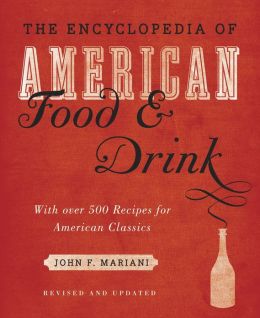 |
The
Encyclopedia of American Food and Drink
by John F. Mariani (Bloomsbury USA, $35) Modesty forbids me to praise my own new book, but let me proudly say that it is an extensive revision of the 4th edition that appeared more than a decade ago, before locavores, molecular cuisine, modernist cuisine, the Food Network and so much more, now included. Word origins have been completely updated, as have per capita consumption and production stats. Most important, for the first time since publication in the 1980s, the book includes more than 100 biographies of Americans who have changed the way we cook, eat and drink -- from Fannie Farmer and Julia Child to Robert Mondavi and Thomas Keller. |
"Eating Italian will never be the same after reading John Mariani's entertaining and savory gastronomical history of the cuisine of Italy and how it won over appetites worldwide. . . . This book is such a tasteful narrative that it will literally make you hungry for Italian food and arouse your appetite for gastronomical history."--Don Oldenburg, USA Today. "Italian
restaurants--some good, some glitzy--far
outnumber their French rivals. Many of
these establishments are zestfully described
in How Italian Food Conquered the World, an
entertaining and fact-filled chronicle by
food-and-wine correspondent John F.
Mariani."--Aram Bakshian Jr., Wall Street
Journal.
"Equal parts
history, sociology, gastronomy, and just
plain fun, How Italian Food Conquered the
World tells the captivating and delicious
story of the (let's face it) everybody's
favorite cuisine with clarity, verve and
more than one surprise."--Colman Andrews,
editorial director of The Daily
Meal.com. "A fantastic and fascinating
read, covering everything from the influence
of Venice's spice trade to the impact of
Italian immigrants in America and the
evolution of alta cucina. This book will
serve as a terrific resource to anyone
interested in the real story of Italian
food."--Mary Ann Esposito, host of PBS-TV's
Ciao
Italia. "John Mariani has written the
definitive history of how Italians won their
way into our hearts, minds, and
stomachs. It's a story of pleasure over
pomp and taste over technique."--Danny Meyer,
owner of NYC restaurants Union Square Cafe,
Gotham Bar & Grill, The Modern, and
Maialino.
|
 |
 |
 |
 |
 |
 |
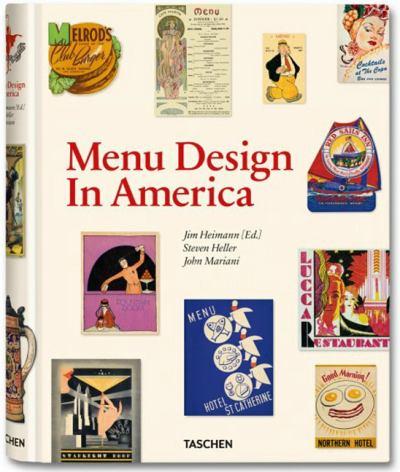 |
 |
 Everett Potter's Travel Report:
Everett Potter's Travel Report: 
 Eating Las Vegas
is the new on-line site for Virtual Gourmet
contributor John A. Curtas., who since 1995
has been commenting on the Las Vegas food
scene and reviewing restaurants for Nevada
Public Radio. He is also the
restaurant critic for KLAS TV, Channel 8 in
Las Vegas, and his past reviews can be
accessed at KNPR.org.
Click on the logo below to go directly to
his site.
Eating Las Vegas
is the new on-line site for Virtual Gourmet
contributor John A. Curtas., who since 1995
has been commenting on the Las Vegas food
scene and reviewing restaurants for Nevada
Public Radio. He is also the
restaurant critic for KLAS TV, Channel 8 in
Las Vegas, and his past reviews can be
accessed at KNPR.org.
Click on the logo below to go directly to
his site.

Tennis Resorts Online: A Critical Guide to the World's Best Tennis Resorts and Tennis Camps, published by ROGER COX, who has spent more than two decades writing about tennis travel, including a 17-year stretch for Tennis magazine. He has also written for Arthur Frommer's Budget Travel, New York Magazine, Travel & Leisure, Esquire, Money, USTA Magazine, Men's Journal, and The Robb Report. He has authored two books-The World's Best Tennis Vacations (Stephen Greene Press/Viking Penguin, 1990) and The Best Places to Stay in the Rockies (Houghton Mifflin, 1992 & 1994), and the Melbourne (Australia) chapter to the Wall Street Journal Business Guide to Cities of the Pacific Rim (Fodor's Travel Guides, 1991).


MARIANI'S VIRTUAL GOURMET
NEWSLETTER is published weekly. Editor/Publisher: John
Mariani.
Contributing Writers: Christopher Mariani, Robert Mariani,
John A. Curtas, Edward Brivio, Mort Hochstein,
Suzanne Wright, and Brian Freedman. Contributing
Photographers: Galina Stepanoff-Dargery,
Bobby Pirillo. Technical Advisor: Gerry McLoughlin.
© copyright John Mariani 2013
